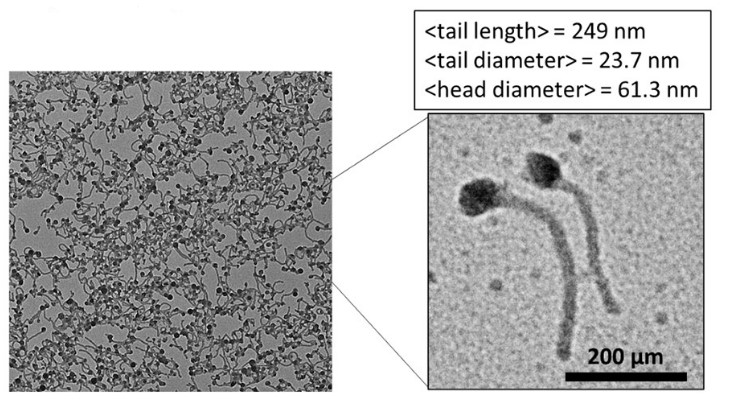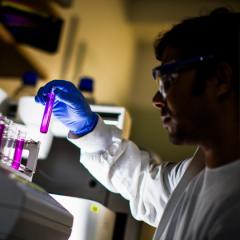So… why are there tadpoles in the AIBN labs? And what do they have to do with cancer research?
Let’s ask Professor Michael Monteiro, whose research group is responsible for the squiggly little polymers you see here.

Michael is the AIBN’s resident expert in 'living' radical polymerisation, specialising in complex nanostructures like nanoworms, toroids, vesicles, spheres and, yes, ‘tadpoles’ for potential use in biomedical applications, including vaccines and drug delivery.
In the American Chemical Society journal Biomacromolecules, Michael’s group – including Dayong Zhang, Bing Sun, Jingyi Wang, Dr Sung-Po (Rafael) Chen, Dr Valentin Bobrin, Yushu Gu, Chun Ki Ng, and Dr Wenyi Gu - take a look at how the polymer tadpoles they design could help improve integrin-targeted therapy for certain cancer stem cells.
As Michael explains:
“Cancer stem cells – while only a small proportion of the cancer cells in a tumour mass – still cause a lot of problems. They can be seen as seeds for tumour growth,” he says.
“Among other things, these cancer stem cells overexpress Arg-Gly-Asp (RGD) binding integrin receptors, which help cells to proliferate and tumours to grow, facilitating metastasis and angiogenesis. RGD may also play a greater role in cancer proliferation by reducing the efficacy of certain therapeutics.
“What we’ve done is design synthetic polymer nanostructures – shaped like tadpoles - and covalently coupled their surface with different RGD densities to see if they can regulate the proliferation of colon cancer stem cells.”
Michael and his researchers found that the shape of their RGD functional tadpoles allowed them to effectively penetrate tumour spheroids, selectively internalise into spherical cells with stem markers, and show density-dependent regulation of colon cancer stem cell proliferation.
“Most nanoparticles used for drug delivery have RGD bound to their surface to target cancer cells,” Michael says.
“This work, however, shows that RGD has a greater role in cancer cell biology, and having the incorrect RGD density on nanoparticles could counter the efficacy of the therapeutic being delivered.”
You can read the paper for yourself right here.



